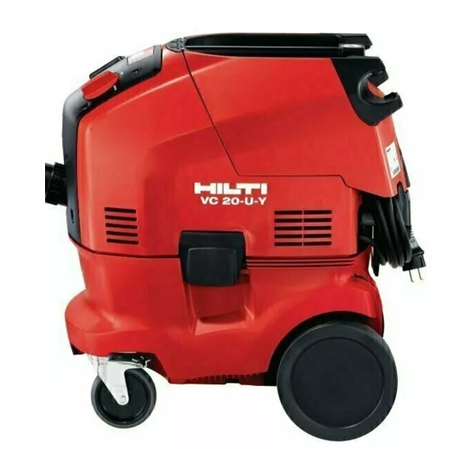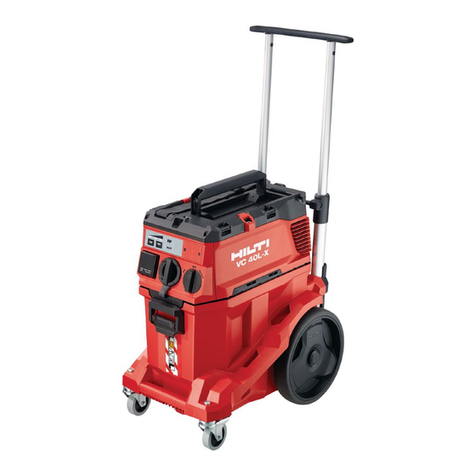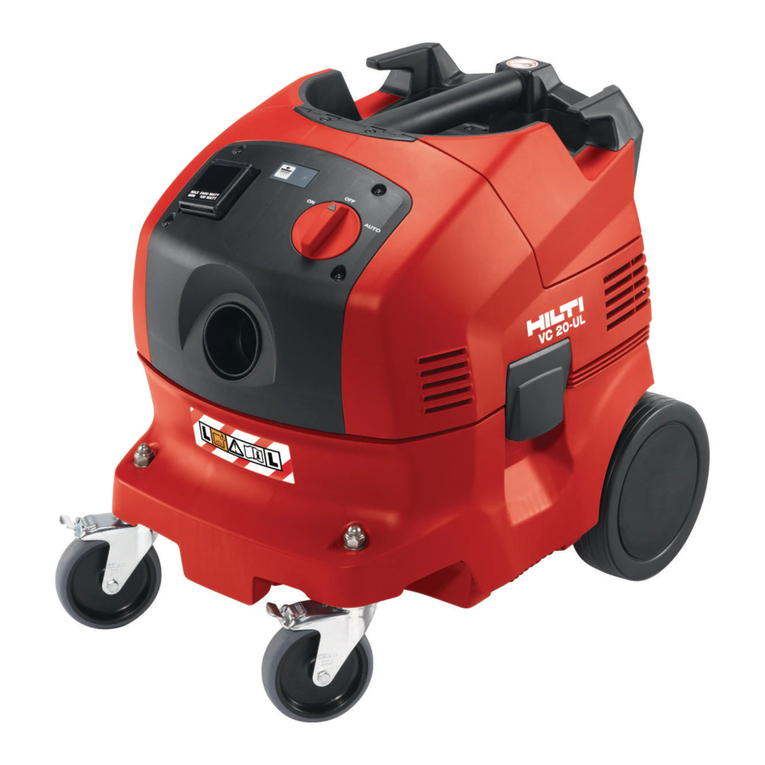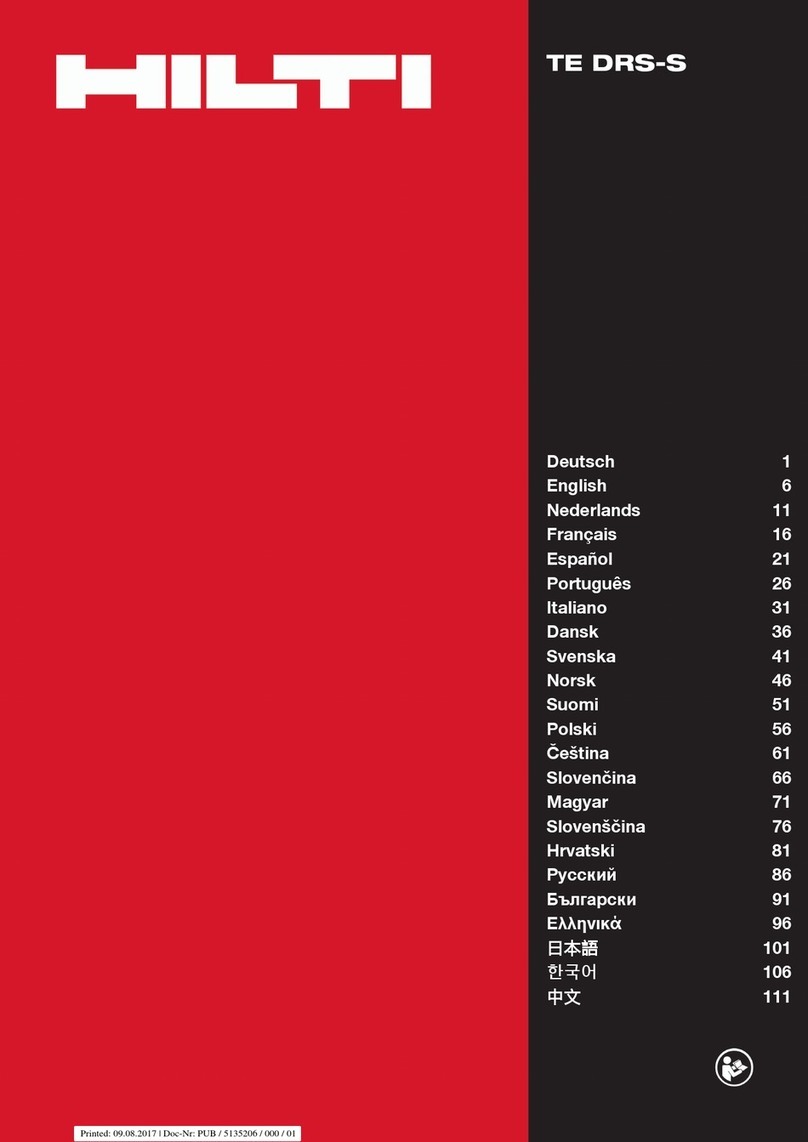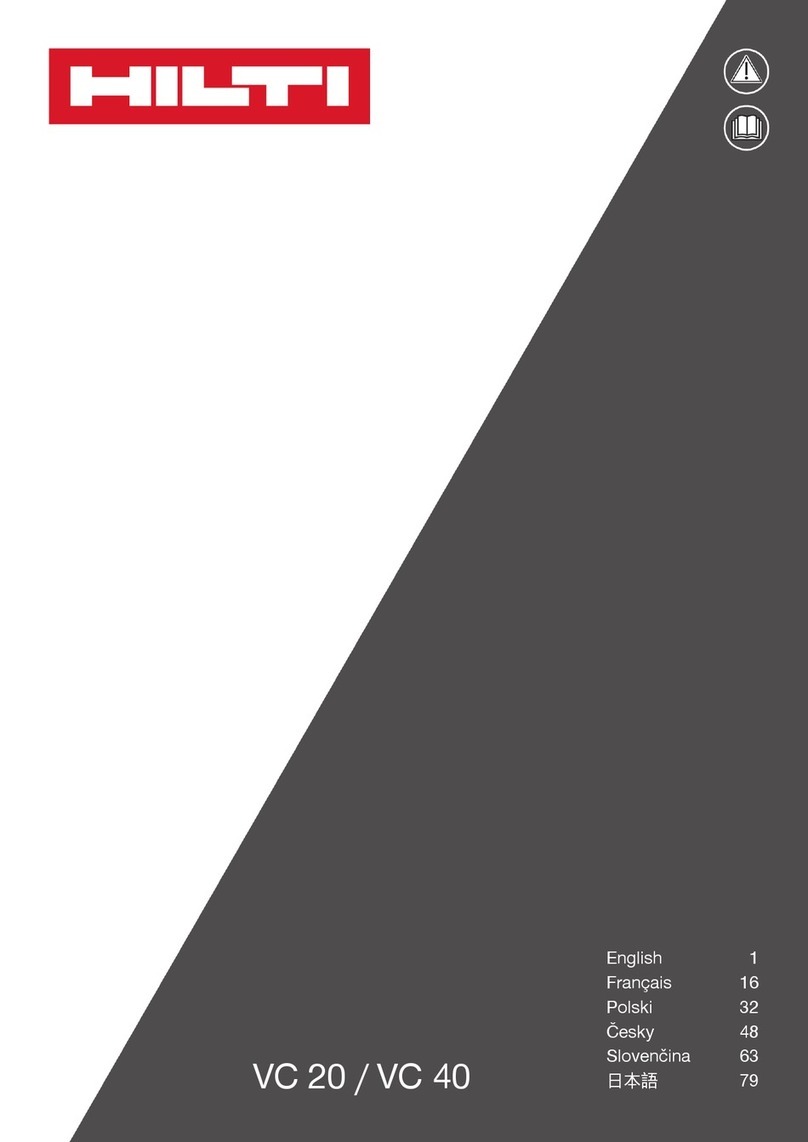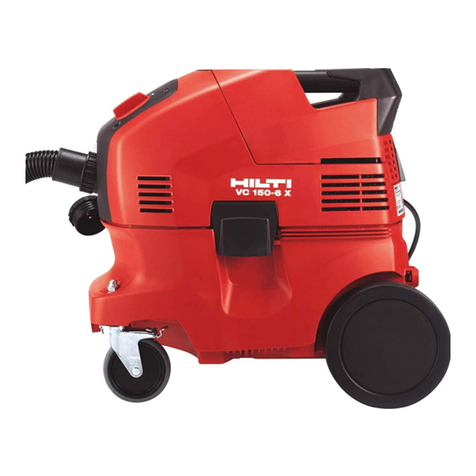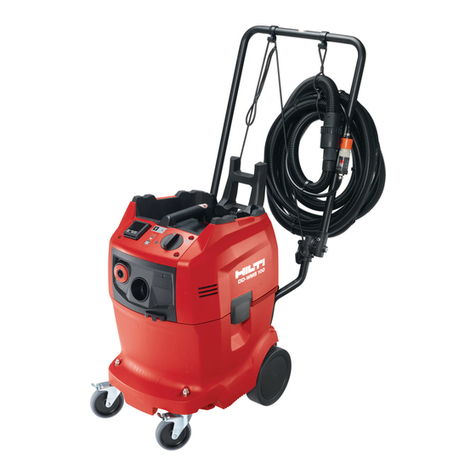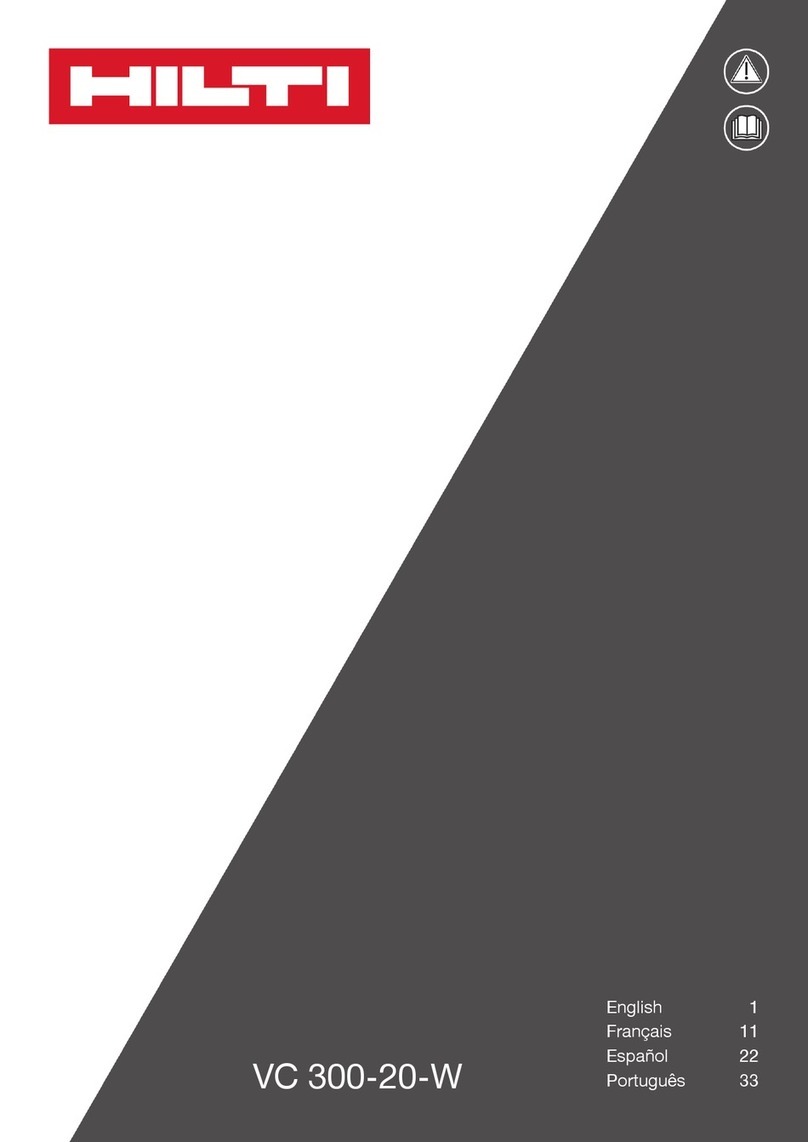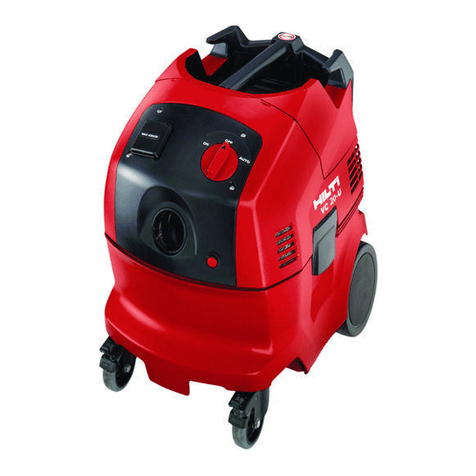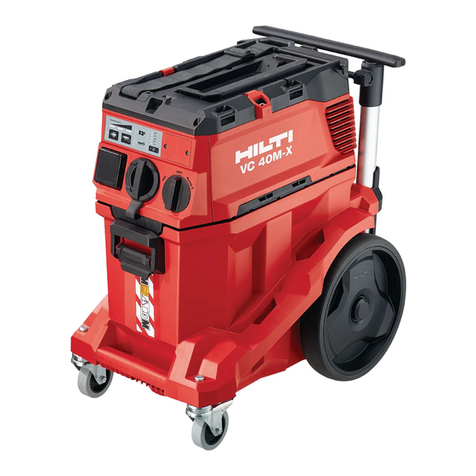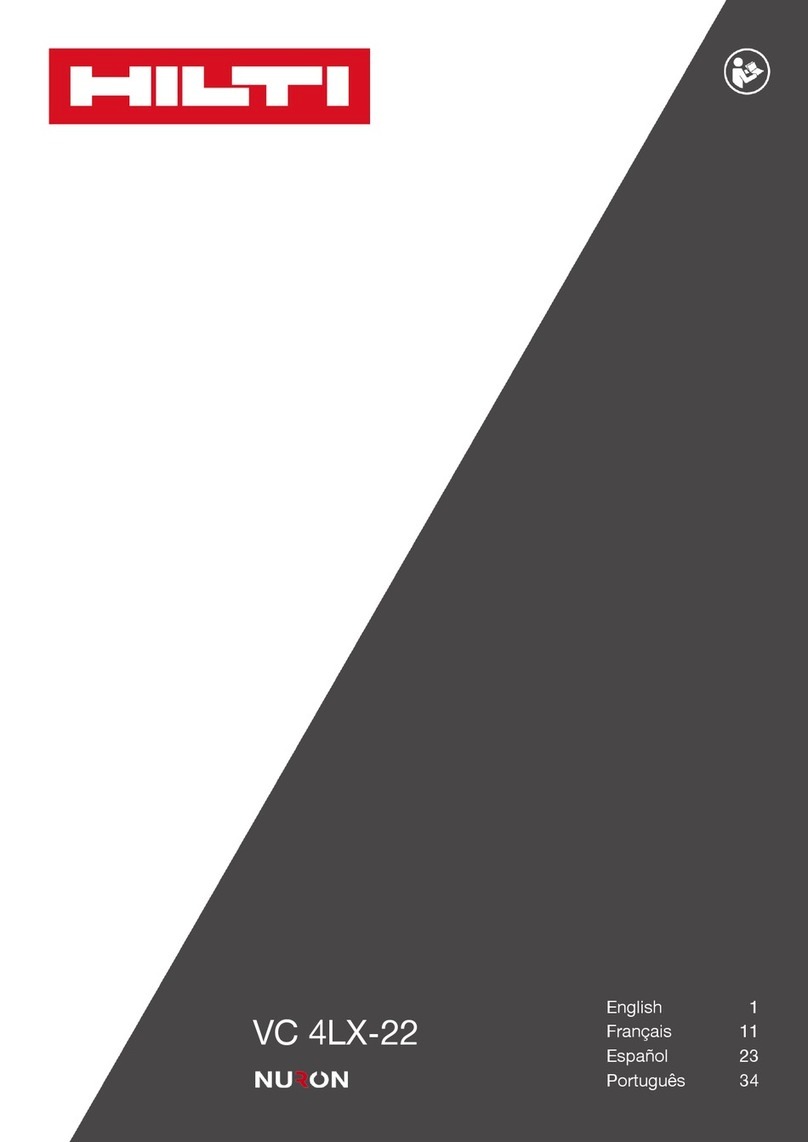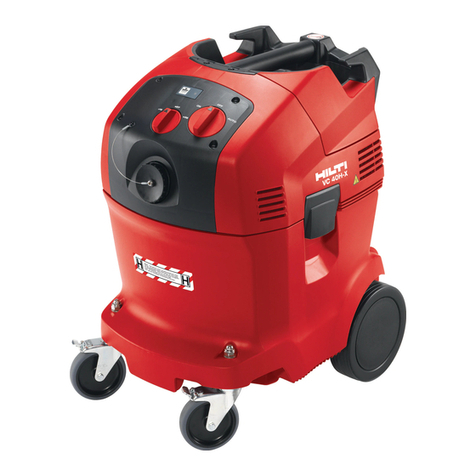
4 English 2298710 *2298710*
shock. Dirty or dusty appliances should thus be checked by Hilti Service at regular intervals,
especially if used frequently for working on conductive materials.
2.4 Personal safety
▶Stay alert, watch what you are doing and use common sense when working with the product.
Do not use the vacuum cleaner while you are tired or under the influence of drugs, alcohol or
medication. A moment of inattention while operating the appliance may result in serious personal injury.
▶The user and any other persons in the vicinity must wear suitable eye protection, a hard hat, ear
protection, protective gloves, safety footwear and breathing protection while the appliance is in
use or while maintenance work on it is being carried out.
▶Make sure that the vacuum cleaner cannot roll away or fall.
▶Engage the wheel brakes so that the vacuum cleaner stands securely. If the wheel brakes are
disengaged the vacuum cleaner may run away out of control.
▶Observe the accident prevention regulations applicable in your country.
▶If devices are provided for the connection of dust extraction and collection facilities, ensure these
are connected and properly used. Use of a vacuum cleaner can reduce dust-related hazards.
2.5 Safety instructions for vacuum cleaners
• Before beginning work with the appliance, the operating personnel must be informed about how to
operate it correctly and about any hazards associated with the materials it will be picking up and how
these materials can be disposed of safely.
• Use of the appliance for cleaning down persons or animals is not permissible.
• Do not use the appliance for continuous, stationary operation in automatic or semi-automatic systems.
• Do not stand on top of the appliance (do not use it as a substitute for a ladder).
• Do not use the appliance under water.
2.6 The material vacuumed up
▶Do not use the appliance to vacuum up flammable or explosive dusts or dusts that present a health
hazard (e.g. magnesium or aluminum dust). Do not use the appliance to vacuum up materials
hotter than 60 °C (140 °F) (e.g. glowing cigarettes, hot ash).
▶Before starting work, check the hazard class of the dust that will be produced when working. Hazardous
materials, such as asbestos and lead, are outside the intended use → page 6 of the product and will void
the warranty.
▶Dust produced by grinding, sanding, cutting and drilling can contain dangerous chemicals. Some
examples are: lead or lead-based paints; brick, concrete and other masonry products, natural stone
and other products containing silicates; certain types of wood, such as oak, beech and chemically
treated wood; asbestos or materials that contain asbestos. Determine the exposure of the operator and
bystanders by means of the hazard classification of the materials to be worked. Implement the necessary
measures to restrict exposure to a safe level, for example by the use of a dust collection system or by
the wearing of suitable respiratory protection. The general measures for reducing exposure include:
▶Working in an area that is well ventilated,
▶Avoidance of prolonged contact with dust,
▶Directing dust away from the face and body,
▶Wearing protective clothing and washing exposed areas of the skin with water and soap.
▶Do not use the appliance to vacuum up flammable, explosive or aggressive liquids (coolants and
lubricants, gasoline, solvents, acids (pH < 5), alkalies (pH > 12.5), etc.).
▶Switch the appliance off immediately if foam or liquids escape from it.
▶Wear protective gloves when using the appliance to vacuum up hot materials at temperatures up
to 60 °C (140 °F).
▶When working with mineral drilling slurry, wear protective clothing and avoid skin contact with the
slurry (pH > 9: caustic).
▶Avoid contact with alkaline or acidic liquids. If contact accidentally occurs, rinse with water. In
the event of the liquid coming into contact with the eyes, rinse the eyes with plenty of water and
consult a physician.


